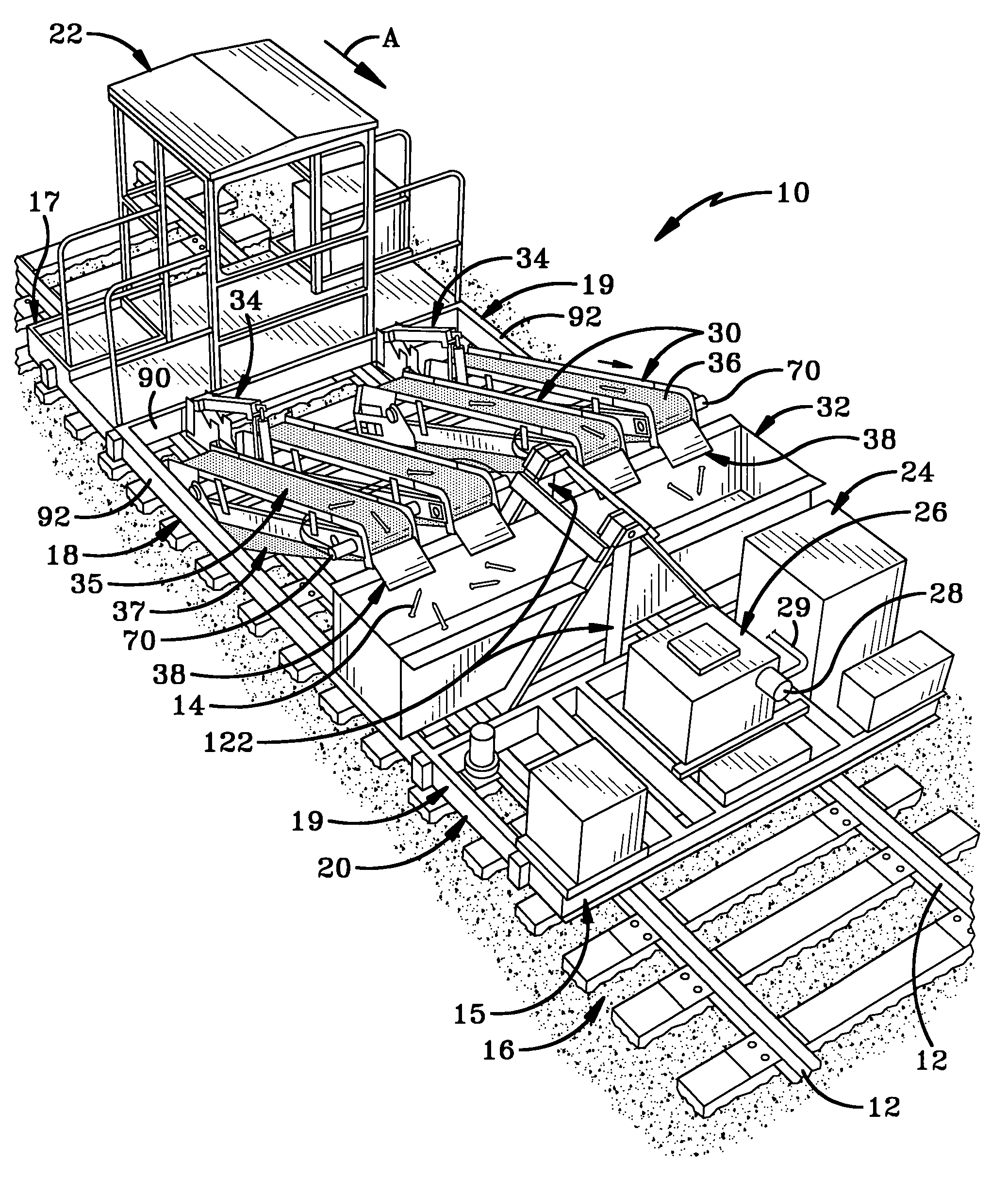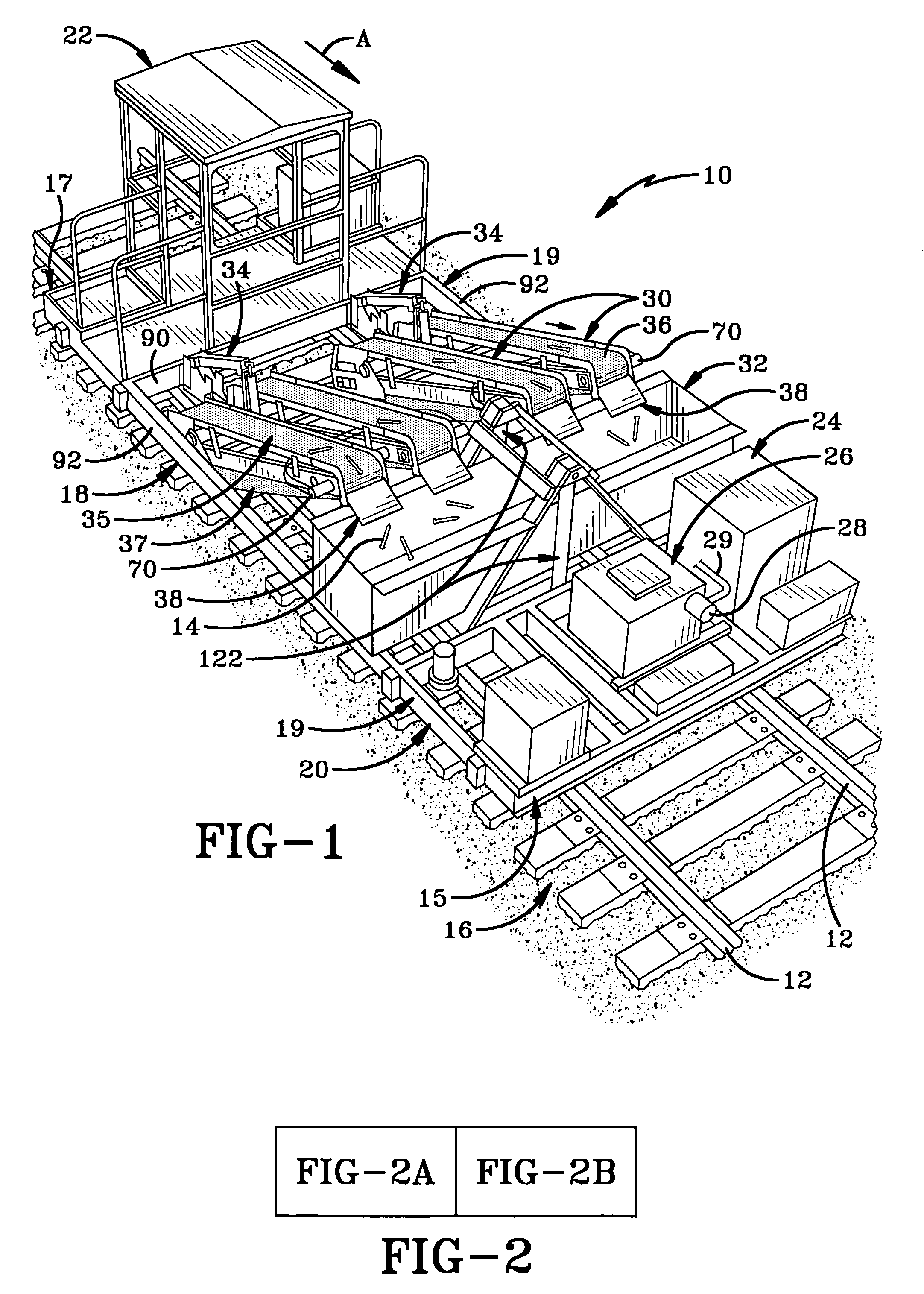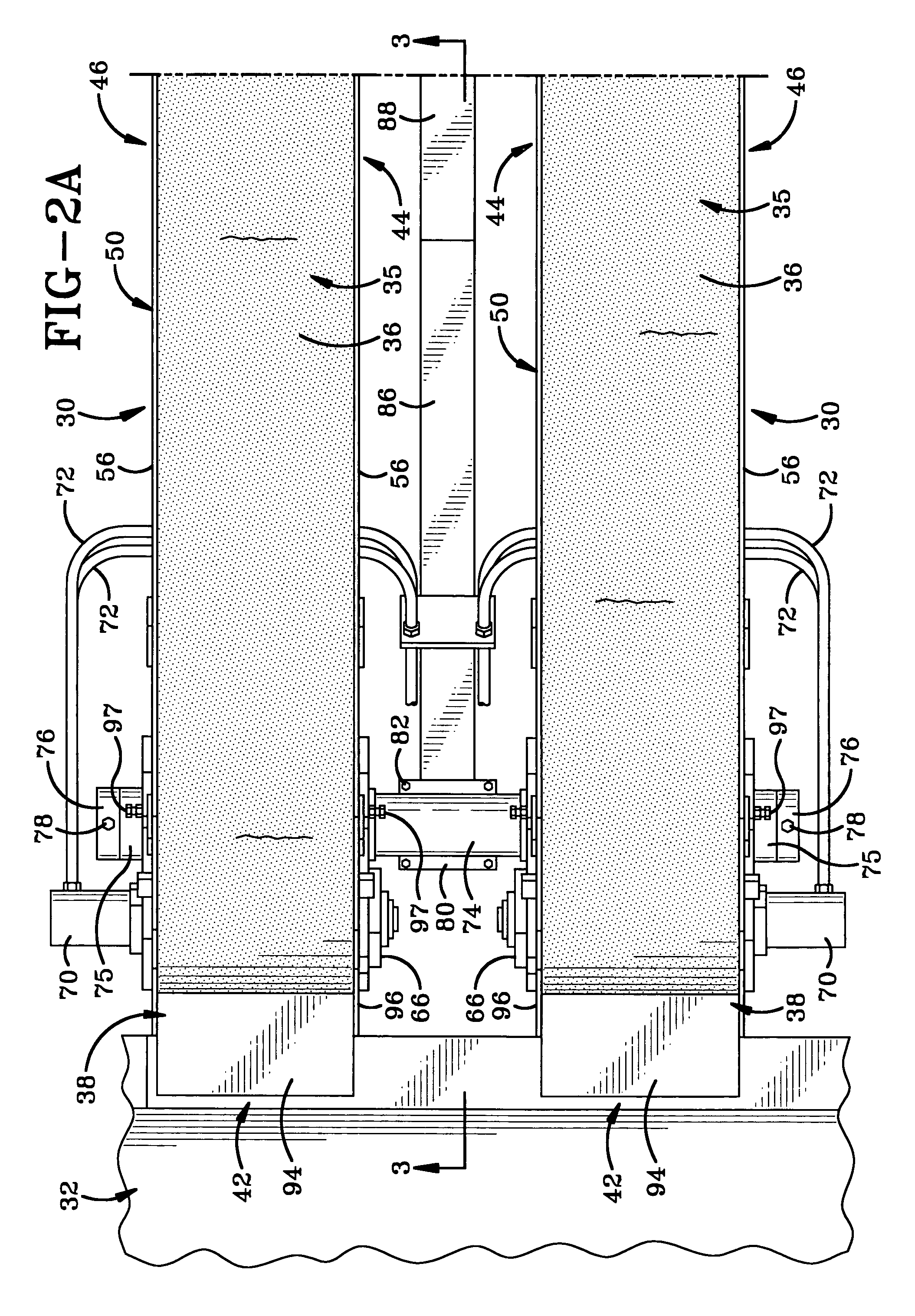Device for removing metallic objects from a railway bed
a technology for railway beds and metallic objects, applied in transportation items, loading/unloading vehicles, ways, etc., can solve problems such as substantial wear, railway bed accumulation of metallic objects such as railroad spikes, and replacement of conveyor belts
- Summary
- Abstract
- Description
- Claims
- Application Information
AI Technical Summary
Benefits of technology
Problems solved by technology
Method used
Image
Examples
Embodiment Construction
[0030] The retriever or the device of the present invention is shown generally at 10 in FIG. 1. Retriever 10 is configured to travel along a pair of spaced rails 12 of a railroad track in the direction of Arrow A in FIG. 1 and remove metallic objects such as railroad spikes 14 from a railway bed 16. Retriever 10 includes a car 18 having a frame 20. Car 18 has a front end 15, a rear end 17 and a pair of opposed sides 19 each extending from front end 15 to rear end 17. Frame 20 includes a pair of longitudinal side frame members or side rails 92 extending along respective sides 19 of car 18. A cabin 22 from which retriever 10 may be driven is mounted on frame 20. An engine 24 is mounted on frame 20 to power retriever 10 for travel on railroad rails 12. A hydraulic reservoir 26 and hydraulic pump 28 are also mounted on frame 20 to provide hydraulic power to various mechanisms on retriever 10 via hydraulic lines. Retriever 10 includes four conveyor belt assemblies 30 for picking up and t...
PUM
 Login to View More
Login to View More Abstract
Description
Claims
Application Information
 Login to View More
Login to View More - R&D
- Intellectual Property
- Life Sciences
- Materials
- Tech Scout
- Unparalleled Data Quality
- Higher Quality Content
- 60% Fewer Hallucinations
Browse by: Latest US Patents, China's latest patents, Technical Efficacy Thesaurus, Application Domain, Technology Topic, Popular Technical Reports.
© 2025 PatSnap. All rights reserved.Legal|Privacy policy|Modern Slavery Act Transparency Statement|Sitemap|About US| Contact US: help@patsnap.com



